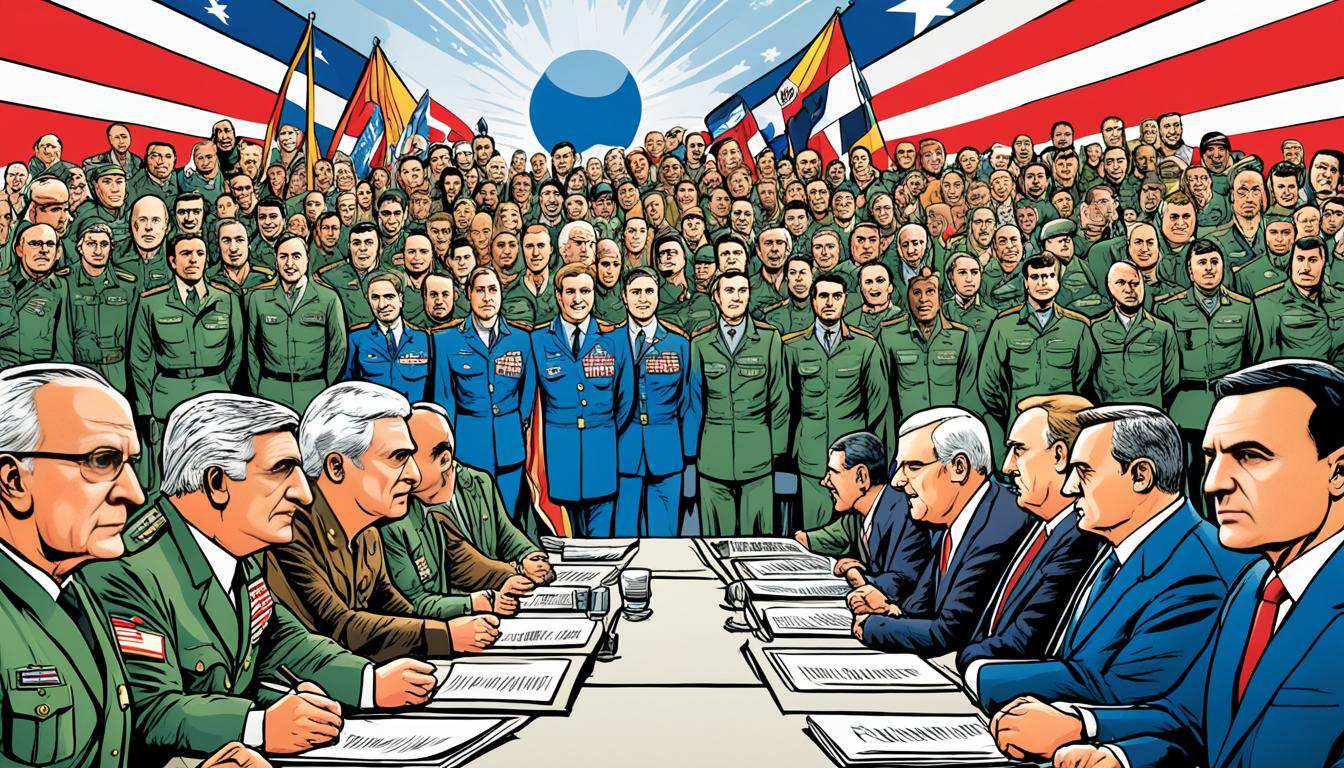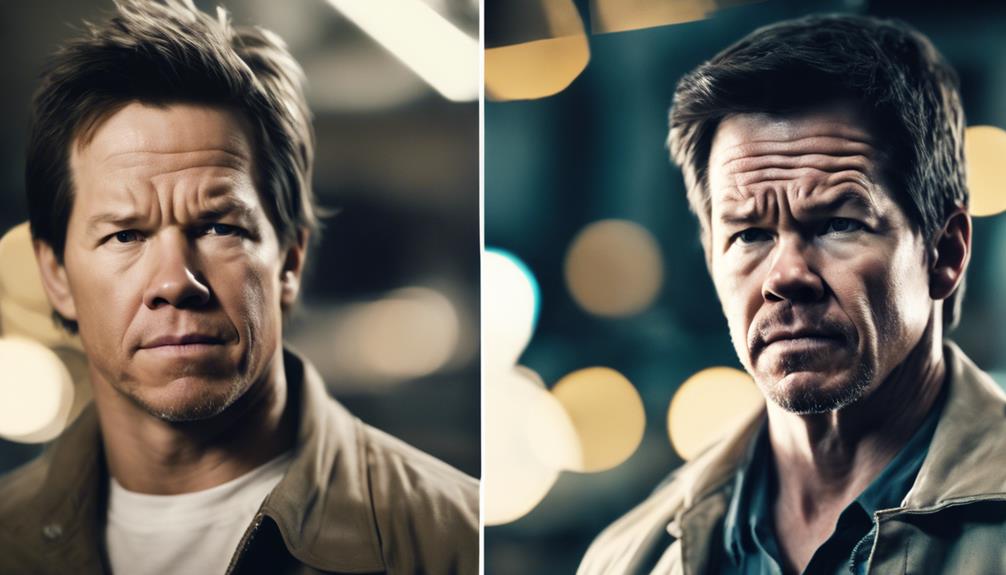The NATO Washington Summit celebrated NATO’s 75th anniversary, drawing 32 allies worldwide. They discussed urgent geopolitical issues and future plans1. Key topics included the crisis in Ukraine, Russia’s actions, the rise of China, and strategic goals for the Alliance.
President Joe Biden was praised for his leadership at the summit amid U.S. political uncertainty1. Despite some minor missteps, his performance was well-regarded by NATO leaders. Yet, the summit also touched on concerns about Donald Trump’s potential return and his doubtful stance on NATO. This highlighted the need for unity and resilience within the Alliance1.
NATO’s strong support for Ukraine was clear, with all allies condemning Russia’s 2022 invasion1. They promised around $43 billion yearly to support Kyiv and confirmed Ukraine’s certain place in NATO. Moreover, NATO pledged new military aid, including Patriot missiles and F-16 jets, to Ukraine. This aid is crucial for enhancing Ukraine’s defense against Russia1.
The summit also focused on the strategic challenge China presents1. Leaders called China a key supporter of Russia’s actions in Ukraine, highlighting its role in global instability. Japan, South Korea, New Zealand, and Australia criticized military ties between Russia and North Korea. They stressed the importance of global security cooperation against emerging threats1.
In facing these unprecedented challenges, NATO committed to defense and deterrence strategies1. The summit was a chance for NATO and Pacific allies to emphasize unity and boost regional security cooperation1.
Key Takeaways:
- The NATO Washington Summit marked the 75th anniversary of the Alliance and witnessed the participation of 32 allies1.
- NATO allies unanimously opposed Russia’s 2022 invasion of Ukraine, pledging approximately $43 billion in annual support and reaffirming Ukraine’s “irreversible path” to NATO membership1.
- New military aid for Ukraine, including Patriot missile systems and F-16 fighter jets, will enhance Ukraine’s defense capabilities in countering Russian aggression1.
- China’s role as a “decisive enabler” in Russia’s war effort against Ukraine was condemned, emphasizing the need for global security cooperation1.
- NATO remains committed to defense and deterrence strategies, supporting Ukraine, and strengthening partnerships to address emerging security challenges1.
Stay tuned for our in-depth analysis of the NATO Washington Summit and its implications for global security.
Biden’s Leadership and Gaffes
At the NATO Washington Summit, President Joe Biden’s ability to lead was widely discussed2. Even with some mistakes, leaders from NATO recognized and praised his work. For example, leaders like French President Emmanuel Macron and British Prime Minister Keir Starmer talked about how Biden helped Ukraine through his leadership in the NATO-Ukraine Council2.
Yes, Biden made a few slips during the summit. Like mixing up the Ukrainian President’s name with Putin’s. But, he quickly fixed his mistake. This shows he can admit and correct his own errors2.
Biden, at 81, was the oldest figure discussed at the summit2. Comparisons were made with the younger Vice-President Kamala Harris, 59, and Donald Trump, who is 78. This sparked talks about how age and experience differ among political leaders2.
The summit also shined a light on diversity in leadership2. Vice-President Kamala Harris, a Black woman, was highlighted as a direct contrast to Donald Trump, who is a white man. This brought up the importance of inclusivity and representation in politics2.
Biden said this NATO summit was incredibly successful2. That’s his take on his leadership and the outcomes of the event. His deep foreign policy knowledge showed when he mentioned historical figures like Golda Meir, showcasing his expertise in international affairs2.
Biden’s mistakes often catch the media’s eye and can be used against him by rivals2. This shows how public image and media play big roles in politics. Leaders must handle negative focus carefully to keep their image positive2.
To counter talk about him being forgetful because of his age, Biden had a clever reply2. He told reporters to “listen to [Trump],” pointing the discussion another way and handling the critique smartly2.
Biden’s leadership gets a lot of support for his experience and skills2. Yet, there are concerns about his slip-ups and how the public sees him. This broad view helps us understand the different opinions on Biden’s role in politics today2.
Concerns Over a Potential Trump Presidency
The idea of Donald Trump returning as president worried NATO leaders. They remembered his doubts about NATO and even his thought of leaving it. Trump’s view on defense spending, especially the 2% goal, also made them uneasy. Yet, NATO’s head, Jens Stoltenberg, trusts in Congress’s ongoing support for NATO. He believes allies will keep their promise on defense funds.
NATO’s Relevance
Trump once questioned NATO’s role in our current world, calling it “obsolete.” He didn’t like that some countries weren’t paying their fair share for defense. But NATO has changed to face new threats. It’s still crucial for its members to talk, work together, and protect each other. This unity is key to responding to dangers like cyber attacks and other modern threats3.
Defense Spending Commitments
Trump wasn’t happy with how much allies spent on defense, focusing on the 2% GDP goal. He felt the U.S. was carrying too much of the burden. But data3 show most NATO countries have reached or surpassed this goal. This shows their strong effort in defense. In 2024, European allies and Canada boosted their defense budget by 18%, the biggest rise in years. This proves their commitment to make NATO stronger and tackle new security risks. Allies are investing in new technologies and increasing their support for NATO’s missions, showing their dedication to their spending promises3.
Bipartisan Support and Assurances
Despite worries about Trump, Jens Stoltenberg remains positive about NATO’s future. He points to the firm support from both parties in Congress and the allies’ commitment to their defense goals. Stoltenberg’s confidence shows NATO’s bond is strong, no matter who leads America. NATO’s mission goes beyond any one leader. Its foundation is built on cooperation and shared responsibility3.
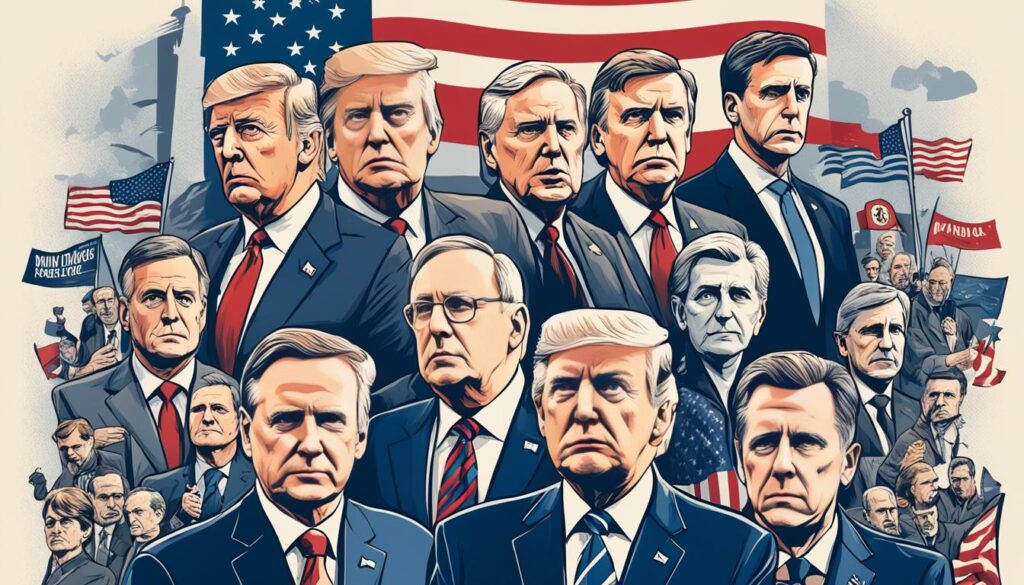
| NATO Summit | 75th Anniversary | Allies |
|---|---|---|
| United States | Host | 32 |
| NATO Allies have convened for the 2024 Summit held in Washington, D.C. to commemorate the alliance’s 75th anniversary. With 32 Allies in attendance, the summit serves as an important milestone in reaffirming the strong bonds and continued commitment to collective defense. | ||
Given the possible challenges of a Trump presidency, NATO allies need to stay united. It’s important they keep talking openly and trust each other. NATO’s success and relevance depend on sticking together and upholding its shared values and promises.
Support for Ukraine’s Defense
At the NATO Washington Summit, strong support was shown for Ukraine’s defense. It stood against Russian aggression and strengthened the alliance’s commitment to keep the region stable. Although Ukraine wasn’t immediately added to NATO, it was made clear that Ukraine is on a steady path to membership. This shows NATO’s acknowledgment of Ukraine’s hard work and persistence4.
NATO promised significant financial help for Ukraine’s military. Allies agreed to give at least €40 billion, or about $43 billion, in the next year. This money will maintain solid security support, helping Ukraine improve its military and work better with NATO forces5.
More than 700 people will help with NATO’s security aid and training for Ukraine. Germany will host this effort, with logistic centers in the alliance’s eastern part. This broad support shows NATO’s commitment to keeping Ukraine safe and secure. It also encourages teamwork and shares knowledge among member nations5.
The dedication to Ukraine goes further than just money. Over 20 NATO allies have made security deals with Ukraine to show their support and offer needed help. They’ve also promised air defense systems. This shows NATO’s effort to boost Ukraine’s ability to protect itself5.
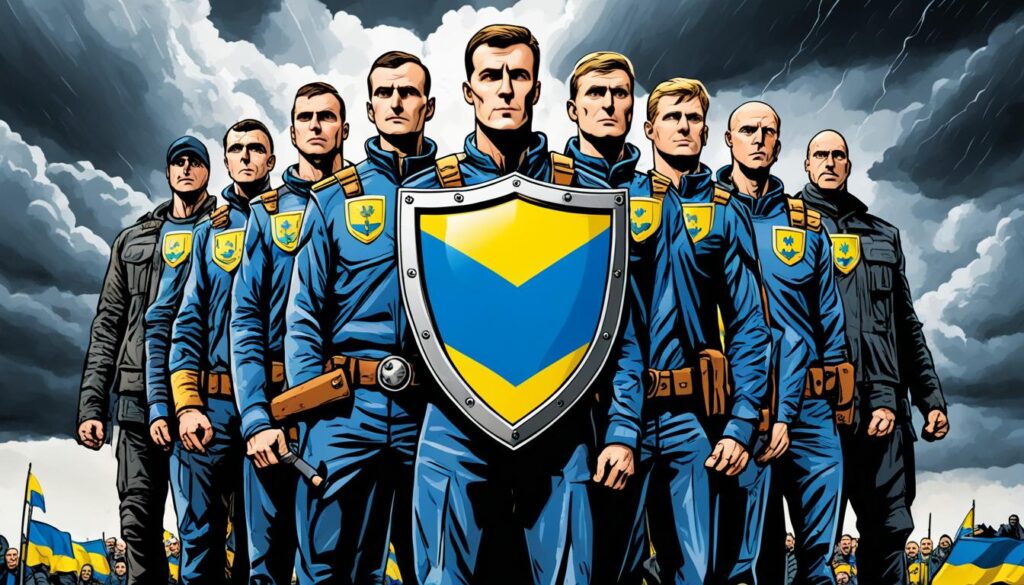
A NATO-Ukraine center focusing on analysis, training, and education has opened in Poland. It aims to use lessons from Russia’s war against Ukraine to make Ukraine’s military stronger. Through intensive training and education, Ukraine’s defense forces will improve5.
Ukraine’s President Zelenskyy is confident about joining NATO soon. He’s focused on doing all it takes to achieve this. Together, NATO and Ukraine are working hard to make Ukraine a long-term member. This effort will protect Ukraine’s independence and enhance security in the area5.
Support for Ukraine’s Defense
| Support | Details |
|---|---|
| Financial Aid | NATO allies have committed to a baseline funding of €40 billion (over $43 billion) within the next year to provide sustainable levels of security assistance for Ukraine5. |
| Military Training | Launch of the NATO Security Assistance and Training for Ukraine (NSATU) to coordinate military training and equipment provision by Allies and partners6. |
| Equipment and Assistance | Pledge of long-term security assistance for the provision of military equipment, assistance, and training for Ukraine6. |
| Interoperability | Establishment of the Joint Analysis, Training, and Education Centre (JATEC) in Poland to increase Ukraine’s interoperability with NATO6. |
NATO and Ukraine are working together to support Ukraine’s military needs. This aid is key for Ukraine’s independence and regional stability. It also strengthens the alliance. NATO’s steady support highlights Ukraine’s vital role and their commitment to shared ideals of safety and partnership4.
Addressing the China Challenge
NATO leaders are really worried about China’s support for Russia in its fight against Ukraine. They say China has a “no-limits partnership”7 with Russia, helping its defense industry a lot7. This includes putting money into it and sending items that can be used for both civilian and military purposes. NATO wants China to stop sending weapon parts and materials to Russia right now7.
NATO is also concerned about cyber-attacks and what China is doing in space7. They’re seeing a lot of cyber threats and tricky tactics from China in areas close to NATO countries7.
Plus, NATO is looking closely at how fast China is making more nuclear weapons7. They say China’s nuclear power is growing quickly, which worries them about safety and peace in the area7.
In facing these problems, NATO is keeping its ties strong with friends in the Indo-Pacific7. A big meeting in Washington, D.C. will have leaders from New Zealand, Japan, South Korea, and Australia. Their presence shows they care a lot about working with NATO for safety8.
At this meeting, they will start four new projects. These focus on helping Ukraine, artificial intelligence, stopping false information, and cybersecurity8. This shows NATO and its Indo-Pacific friends are united in tackling new threats8.
South Korea and Japan are already helping Ukraine with military stuff, showing they’re in it to keep places safe8. Their help is a way to stand together against what China and Russia are doing8.
The fights between the United States and China are getting worse, making NATO see China as a bigger problem8. This shows everyone is more worried about China’s power worldwide8.
After Russia went into Ukraine in 2022, leaders from Japan, South Korea, Australia, and New Zealand went to a NATO meeting for the first time8. Everyone is starting to see the big issues caused by China8.
Beijing doesn’t like the idea of a group like NATO forming in the Indo-Pacific8. Chinese experts are worried about what it means for peace and safety there8.
The U.S. Defense Secretary talks about the importance of working with countries that think alike in Asia-Pacific8. There’s a big push to keep the Indo-Pacific free and open. And they’re doing this without creating a tight military group like NATO8.
| Statistical Data7 | Insights |
|---|---|
| 32 NATO members approved the final communiqué at the Washington summit7 | Illustrates the unified stance of NATO member countries |
| China accused of providing large-scale support for Russia’s defense industrial base7 | Highlights China’s involvement in Russia’s military capabilities |
| China rapidly expanding and diversifying its nuclear arsenal7 | Raises concerns about the stability and security of the region |
| Statistical Data8 | Insights |
|---|---|
| NATO summit to see the participation of leaders from New Zealand, Japan, South Korea, and Australia8 | Highlights the interest of Indo-Pacific partners in NATO’s Security initiatives |
| Four new joint projects to be launched during the summit, focusing on Ukraine, artificial intelligence, disinformation, and cybersecurity8 | Emphasizes collaboration between NATO allies and Indo-Pacific partners, tackling emerging challenges |
| Leaders of Japan, South Korea, Australia, and New Zealand attended a NATO summit for the first time following Russia’s invasion of Ukraine8 | Demonstrates global concern and recognition of the challenges posed by China |

Strengthening Defense and Deterrence
Investing in Defense Preparedness
NATO countries are dedicated to boosting defense and deterrence to keep peace in Euro-Atlantic. Currently, 23 allies dedicate at least 2% of their GDP to defense9. This investment strengthens their military, enhances readiness, and prepares them to face threats.
Innovative Technologies in Focus
NATO is updating its defense with new technologies. It’s using artificial intelligence, quantum technology, and biotechnology in its operations. This keeps NATO ready for future challenges and brings the perks of new tech9.
An Emphasis on Security Assistance
Since the Cold War ended, NATO’s defense strategies have been carefully designed9. The alliance is giving Ukraine $43 billion in support, helping its defense9. This aid is essential for Ukraine to build a strong military.
Addressing Cyber and Space Threats
As tech advances, defending against cyber and space threats becomes crucial. NATO built a centre to improve cybersecurity. It also focuses on protecting space assets, like satellites9.
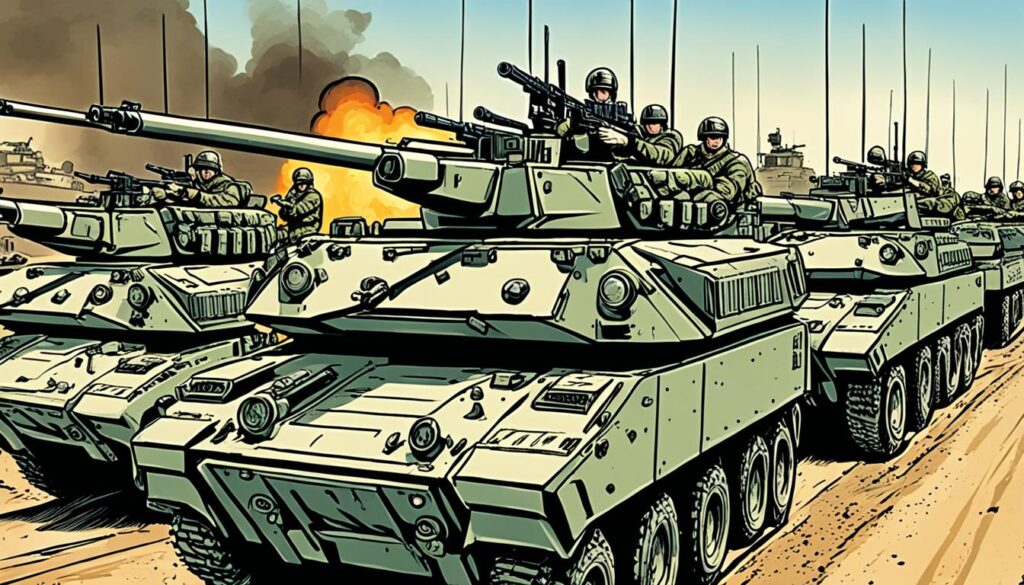
Building Defense Infrastructure in Europe
Building military sites across Europe strengthens defense10. The US doubled its NATO battle groups in the east9. Spain will have more U.S. destroyers, boosting maritime security10. Adding F-35 squadrons in the UK and shifting Aegis-Ashore sites under NATO shows its defensive resolve10.
Strategic Partnerships and Industry Strengthening
NATO boosts its defense industry through the Industrial Capacity Expansion Pledge11. The US invested $30 billion in its defense industry, benefiting 35 states11. The alliance is also addressing threats from Russia and China, aiming to surpass Russia’s military spend and countering China’s support for Russia11.
| Data | Statistics |
|---|---|
| Total Brigade Combat Teams in Europe (July 2024) | 510 |
| Projected NATO Allies meeting 2% of GDP threshold for defense spending | 23 out of 3211 |
| European defense spending increase since February 2022 | $80 billion11 |
| Aegis-Ashore sites transferred to NATO control | Romania (2016), Poland (scheduled for July 2024)10 |
By focusing on defense and deterrence, cybersecurity, and new technologies, NATO keeps the Euro-Atlantic safe. Investing in defense infrastructure and industry, along with forming strategic partnerships, strengthens the alliance1011.
Long-Term Support for Ukraine
NATO knows how crucial it is to help Ukraine for a long time. This is because of the growing threats from Russia and the need to keep the area safe. To do this, the alliance started the NATO Security Assistance and Training Centre. This center boosts Ukraine’s ability to defend itself5.
At the center, NATO countries give military gear, training, and help with infrastructure to Ukraine. This makes Ukraine stronger and better prepared. NATO’s goal is to make sure Ukraine can stand up to and protect against any dangers5.
NATO countries have promised to give Ukraine at least €40 billion every year. This money is for defense and to keep threats away126. This big promise shows they’re serious about making Ukraine safer and more independent6.
Talking about Ukraine joining NATO can be complex. Views on this differ among member countries. But, NATO stands together in helping Ukraine defend itself6. This unity shows NATO’s strong wish to bring stability to the area6.
By working closely with Ukraine, NATO wants to make their defense work better together. They also want to improve Ukraine’s defense industry. Helping Ukraine follow the best practices of the Euro-Atlantic area is a key goal65. Making Ukraine’s defense industry better is very important for a country that can rely on itself for protection65.
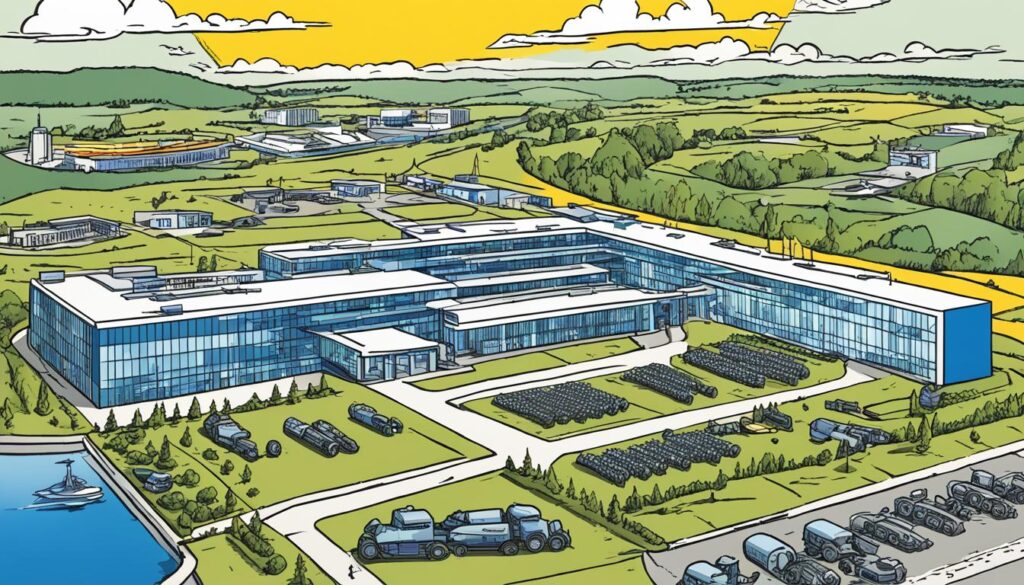
NATO allies are also sending things like air defense systems and F-16 fighter jets to Ukraine. These are meant to make Ukraine’s defenses stronger12. Such moves show how much the alliance wants to keep Ukraine safe12.
There’s also a focus on training Ukrainian forces together. Allied countries have plans to improve the skills and readiness of Ukrainian troops5.
More than 20 NATO countries have made security deals with Ukraine5. This shows that keeping Ukraine safe and helping it get closer to Euro-Atlantic standards is a big goal for them. The creation of the Joint Analysis, Training, and Education Centre (JATEK) in Poland also shows NATO’s commitment to Ukraine’s defense65.
NATO is all in when it comes to helping Ukraine defend itself and keep the region stable1265. By giving support, money, top-notch training, and the right gear, NATO is determined to make Ukraine stronger. This shows how important teamwork and shared security are for keeping peace and prosperity in the area1265.
Conclusion
The 75th NATO Washington Summit showed the alliance’s dedication to global security amid new threats13. With 32 allies uniting, NATO promised to support Ukraine’s defense with yearly assistance of about $43 billion13. This includes pledges for air defense aids like Patriot missile systems and F-16 jets13.
At the summit, China was named a significant supporter of Russia’s war efforts in Ukraine13. The growing aggressiveness of China and its support for Russia were concerns. NATO highlighted the need to improve its defensive strength13. Embracing new technologies and tackling cyber and space threats are seen as essential13.
NATO remains focused on collective defense and unity for its members’ peace, stable, and prosperous future13. The 75th Anniversary Summit, set for July 9-11, 2024, will prioritize support for Ukraine and enhancing defense14. Despite future challenges, NATO is prepared to address emerging global security threats13.
